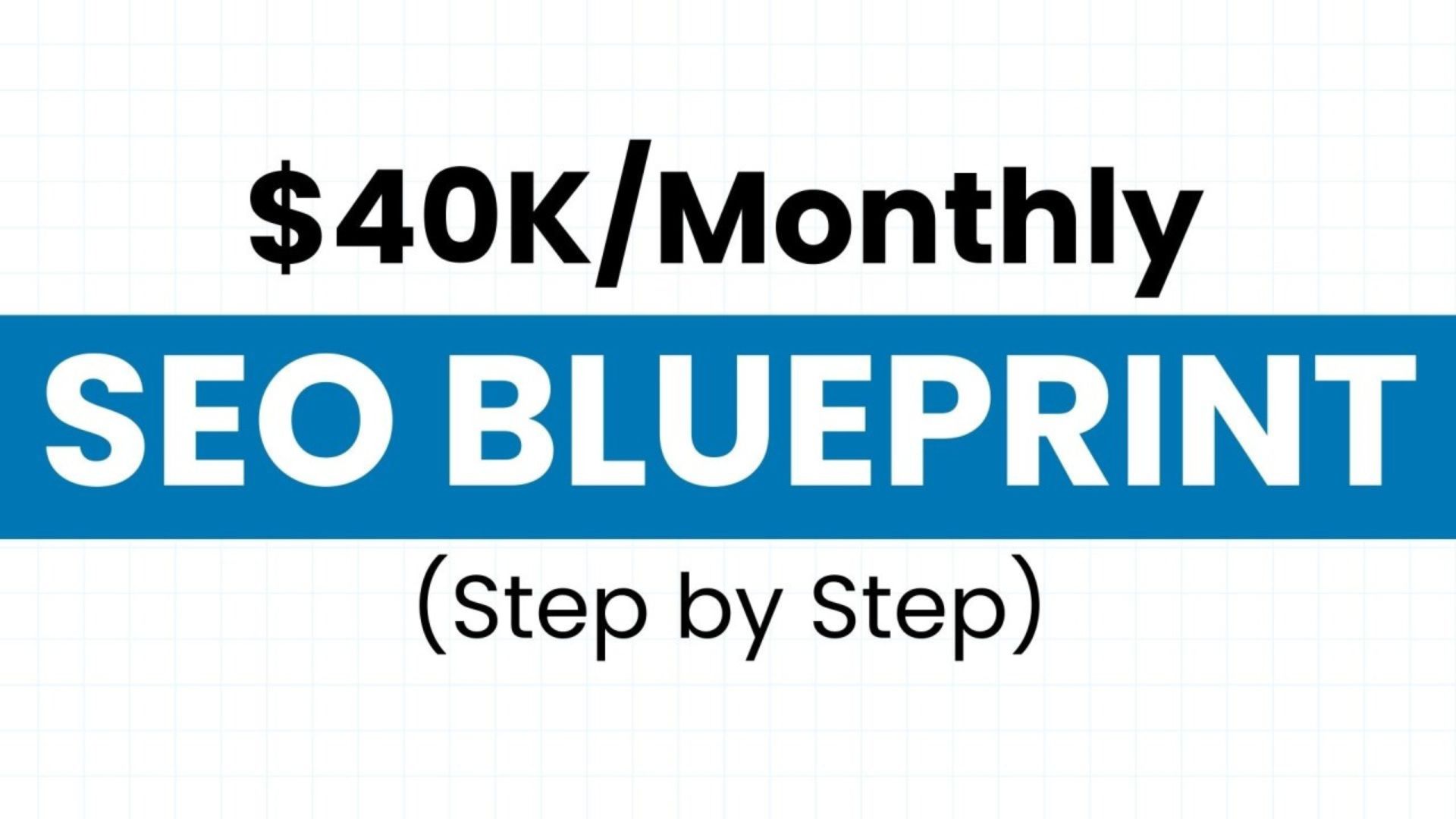Blog Details

How I Revived Dead SEO and Grew to $40K/Month in 6 Months — My Proven Blueprint
It wasn’t my own site that opened my eyes—it was a client’s. We followed every traditional SEO rule: published keyword-rich blogs, built quality backlinks, and watched organic traffic climb month after month. On paper, it looked like a win.
But then I asked one simple question: “How much revenue has this traffic generated?” The silence said it all. Despite the surge in visitors, sales were flat.
That’s when it hit me—traffic isn’t the goal, revenue is. We were optimizing for the wrong outcome. So, I flipped the strategy. I stopped chasing rankings and rebuilt SEO as a sales funnel.
Fast forward six months, and that same client was generating over $40K per month organically. That experience taught me a powerful truth: good SEO doesn’t just attract people—it converts them
Step 1: I Did the Math Backwards (And Everything Changed)
After that wake-up call with my client, I started with a simple question: What does real success look like in numbers? Not rankings. Not impressions. Actual, measurable revenue.
The client’s goal was $40K per month in sales. Their average order value was about $500, which meant we needed 80 sales a month.
So, I worked backward:
-
$40K/month = 80 sales at $500 each
-
At a 2% conversion rate, that meant 4,000 highly targeted visitors every month.
That realization changed everything. We didn’t need more traffic—we needed the right traffic. People ready to buy, not just browse. That shift—from chasing volume to focusing on intent—became the foundation for everything I did next.
Step 2: I Stopped Writing for Google (And Started Writing for Humans)
The real turning point came when I reviewed one of the client’s top-ranking blog posts. It was sitting comfortably on page one for a competitive keyword, driving plenty of traffic—but conversions? Zero. Not a single lead, sale, or inquiry.
That’s when it hit me: ranking isn’t the goal—selling is. We were playing Google’s game and completely ignoring the user.
So, I rewired the content strategy.
-
Moved the CTA above the fold so visitors didn’t have to scroll to take action.
-
Added trust signals like client logos, reviews, and secure payment icons in key spots where hesitation usually happens.
-
Optimized the mobile experience and cut load times to under 2 seconds because more than half the visitors were bouncing before the page even loaded.
The result? That same blog went from zero conversions to generating 5–7 qualified leads every week. Bounce rate dropped, time on page increased, and most importantly—it started making money.
That was all the proof I needed: write for the person, not the algorithm.

Step 3: I Built Real Authority (Not Just Backlinks)
For years, I believed the common SEO advice: “Just build more backlinks.” So we did—directory links, random blog comments, and low-quality outreach that landed us on irrelevant sites. The backlink count went up, but authority? Not really. Rankings barely moved, and traffic quality was inconsistent. That’s when I realized we weren’t building trust—we were just ticking SEO boxes.
So I changed the game plan.
Instead of chasing volume, I focused on real authority:
-
Wrote 3 high-value guest posts each month—not for backlinks, but to provide genuine insights on trusted industry blogs.
-
Replied to HARO requests daily. One response landed a feature in a niche B2B tech magazine that drove massive referral traffic for a month—and even led to a podcast invite and two new leads.
-
Claimed every relevant local citation—Google Business, industry-specific directories, and niche profiles. These small trust signals added up fast.
The result? Better rankings and stronger credibility with both search engines and real people. Authority isn’t about link count—it’s about who’s willing to vouch for you.

Step 4: I Repurposed Like Crazy
One of the most underrated growth hacks in SEO isn’t creating more—it’s repurposing what already works. After spending hours on a blog post that ranked and converted, I realized I was leaving so much value on the table by just hitting “publish” and moving on.
So I asked myself: How many different ways can I squeeze ROI from this one piece of content?
Here’s what I did:
-
Turned blogs into Twitter threads—pulled out key insights and linked back to the post, driving direct traffic and email signups.
-
Converted guides into YouTube videos, breaking down complex topics into visual walkthroughs. This opened a new organic channel and boosted engagement.
-
Spun content into podcasts, interviews, and newsletters, reaching new audiences and extending its lifespan.
One blog post—originally targeting a mid-funnel keyword—became:
-
A viral Twitter thread
-
A YouTube video that ranked
-
An email mini-series
-
A podcast episode
-
A LinkedIn carousel
Combined, those assets drove more traffic and leads than the original blog ever could on its own.
Repurposing didn’t just save time—it multiplied impact. When your SEO strategy is built on quality over quantity, this is how you scale without burning out.
Step 5: I Only Tracked What Actually Drove Revenue
In the early days, I treated keyword rankings like a scoreboard. I celebrated every time we hit page one and panicked when we dropped a few spots—even when traffic and conversions stayed the same. Eventually, I asked the hard question: Are these rankings actually making us money? Most of the time, the answer was no.
So I stopped chasing vanity metrics and started focusing on what truly mattered.
Here’s what changed:
-
Weekly conversion audits to identify which content was driving leads and sales—not just clicks.
-
Zeroed in on the top 20% of revenue-generating pages and optimized or replicated their success.
-
Tracked content-to-sale journeys to understand which pages consistently appeared before a conversion.
That shift was a game-changer. Instead of guessing, I had a clear playbook of what worked—and I doubled down on it.
The result? Less content, more conversions, and a predictable revenue stream. When you treat SEO like a revenue engine instead of a ranking race, everything changes.
Conclusion: SEO Isn’t Dead—It’s Just Misunderstood
For years, I treated SEO like a numbers game—more keywords, more content, more backlinks, more traffic. But traffic without conversions is just noise. The real breakthrough came when I stopped treating SEO like a faucet and started treating it like a sales funnel. Every page, every piece of content, every tactic had one purpose: move someone closer to buying.
After six months of revenue-focused SEO, my client went from decent traffic with disappointing results to generating a predictable $40K/month organically. No viral hacks. No content factories. Just a strategic focus on intent, conversion, and authority.
If you’re tired of chasing rankings without seeing results, it’s time to rethink your approach. SEO isn’t about impressing Google—it’s about guiding the right people to take action.
Want to implement this strategy on your own site? [Download my SEO-to-Sales Funnel Checklist]—fill out the Google form, and I’ll send the PDF straight to your inbox. This checklist shares real-world strategies that actually drive revenue, not just rankings.
If you’d like to build a strategy together, we can schedule a meeting—just email me or send me a DM. Or, if you prefer working through a marketplace, visit my Fiverr profile to get started.
To Get Important Business
Ideas and Update
About Me
I’m Nurnobi Islam, a Meta Ads & PPC expert helping businesses scale profitably through high-ROI Facebook, Instagram, and Google campaigns. I turn ad spend into measurable growth.
Address
- Kurigram, Bangladesh - 5670
- hello@mrnur.com
- +880 1731 50 98 95
